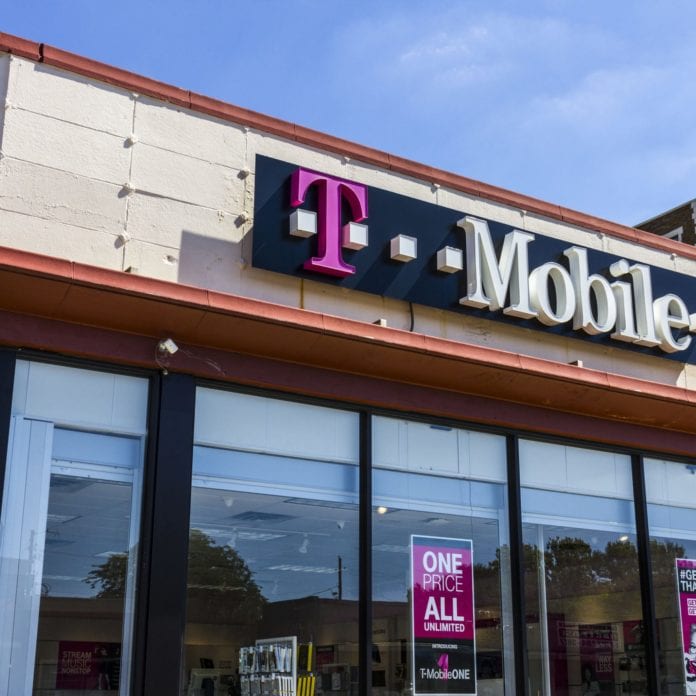T-Mobile US continues its streak of ongoing growth, rounding out 2017 with both a fourth quarter and a full year of impressive numbers: services revenues at $7.8 billion for the quarter, up 7.1% year-over-year. Total revenues at $10.8 billion in the quarter, an increase of 5.1%. Profits of $2.7 billion for the quarter. And a benefit of $2.2 billion from the recent implementation of tax reform.
T-Mobile US had previously released preliminary customer numbers for the quarter and released its full results for the quarter and year today.
“We posted record results across the board in 2017,” said T-Mobile US Leger on a call with investors.
For the full year, T-Mobile US reported $30.2 billion in service revenue, $40.6 billion in total revenues — both reflecting growth of more than 8% from 2016 — and net income of $4.5 billion. The carrier said that it finished out 2017 with 3.6 million postpaid branded net additions, but it does expect that number to slow in 2018. T-Mobile US expects to gain between 2 million-3 million postpaid net additions this year.
Among the points that Legere hit on the quarterly call:
-T-Mobile US initiatede a share buyback late last year and as of Feb. 5th, had bought back 12.3 million shares for $783 million.
– The carrier’s purchase of Layer3 is the next progression in T-Mobile US’
“This move represents a progression in our video strategy,” Leger said. “We continue to believe that content is moving to the internet and the internet is going mobile, creating multiple opportunities for T-Mobile to continue disrupting the existing landscape for the benefit of consumers everywhere.”
-T-Mobile US is “off to a running start” on its 600 MHz deployment, Legere said, and covers 586 cities and towns in 28 states; its geographic range is 300,000 square miles, he addded. Legere said the build-out would accelerate in 2018 and that T-Mobile US expects to see more than dozen new smartphone models that support 600 MHz, in addition to the two that it currently has.
– The carrier plans to build on its retail expansion of 2017 and put an “emphasis on greenfield markets in 2018” where it has not previously had a presence, Legere said, as well as targeting specific customer segments where it doesn’t have historically strong market share. He cited T-Mo’s Unlimited 55+ plan as an example, and reminded analysts that the company only has 2-3% market share in the enterprise market.
Legere put out a string of tweets touting the carrier’s success:
As expected, $TMUS had a quarter FULL of BEST EVERs!! These are results the competition can only dream of! Get ready, because I’m going to start bragging in 3… 2… 1… https://t.co/cdPKDNUh4v
— John Legere (@JohnLegere) February 8, 2018
And all of that customer growth = the BEST EVER FULL YEAR FINANCIAL PERFORMANCE IN $TMUS HISTORY! $TMUS had the BEST EVER quarter for revenue! We had $7.8B in service revenue & $10.8B in total revenue for Q4! pic.twitter.com/wraAU5QjrD
— John Legere (@JohnLegere) February 8, 2018
Bottom line, $TMUS is firing on all cylinders & we’ll continue to disrupt wireless, focus on customer experience & expand into new geographies, segments & industries! On to 2018! #WeWontStop https://t.co/cdPKDNUh4v
— John Legere (@JohnLegere) February 8, 2018
The operator also recently completed narrowband internet of things testing in anticipation of broader roll-out of an NB-IoT network this year. T-Mobile US started turning up NB-IoT sites last year.
Image copyright: jetcityimage / 123RF Stock Photo

